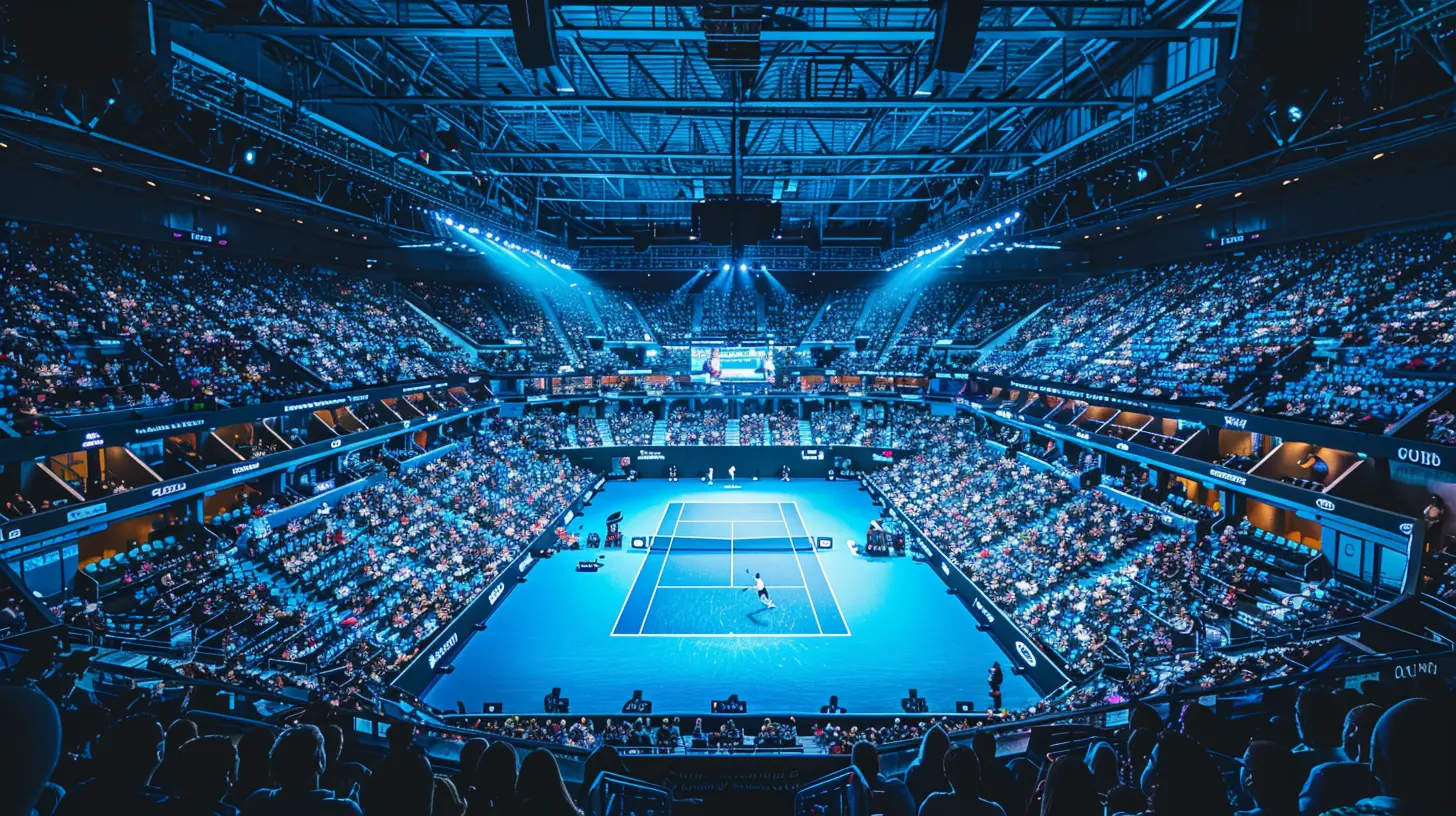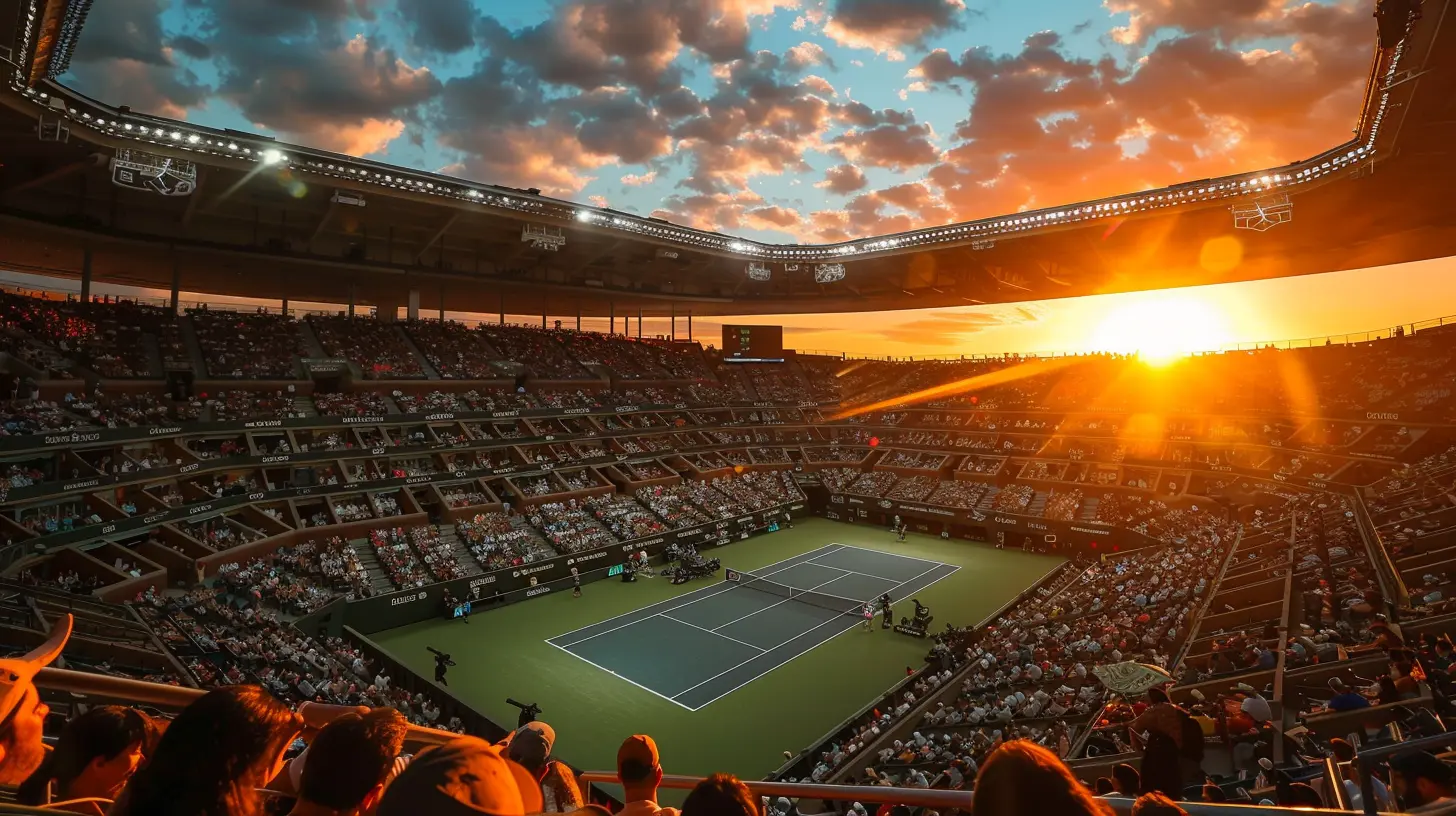The Rise of Social Media in the World of Tennis
13 October 2025
Tennis has always been a game of tradition, elegance, and intense competition. But over the past decade, something unexpected has shaken up the baseline—social media. Platforms like Instagram, Twitter, TikTok, and YouTube have transformed how we experience tennis, how players connect with fans, and even how the game evolves.
Now, whether you're a seasoned tennis fanatic or someone who stumbled upon a match while scrolling, chances are, you've felt the magnetic pull of tennis content on your feed. So let’s dive into the fascinating rise of social media in the world of tennis—and why it's more than just a trend. 
A Whole New Era of Fandom
Gone are the days when fans had to wait for post-match interviews or magazine features to get a glimpse into a player’s life. Social media has cracked that world wide open.Now? We see what Rafa eats for breakfast, what Serena’s daughter wore on Halloween, or how Coco Gauff hypes herself before a big match. This constant stream of content has turned players into relatable humans rather than invincible athletes.
From Fans to Followers
Think about it: fans have become followers. That shift changes everything. With just one tap, they can comment, like, or DM their tennis idols. That bond, no matter how digitally thin, adds a new dimension to being a fan.Players as Their Own Brands
Social media isn’t just a side hustle for tennis stars—it’s a strategic platform. Players are no longer dependent on traditional media to shape their public image. They curate their personal brand. Naomi Osaka, for example, uses her social channels to speak out on mental health and social justice. Nick Kyrgios? He keeps it raw, real, and sometimes controversial.Either way, it’s authentic—and authenticity sells.
Breaking the Racket: How Content is Served (and Consumed)
Let’s talk content. If you’ve scrolled through your feed recently, you’ve probably seen everything from slow-motion backhands to behind-the-scenes locker room dances. Social media has redefined how tennis is served up to the world.Short Form is King
With the rise of TikTok and Instagram Reels, bite-sized content is crushing it. Quick match highlights, trick shots, training drills—these are easy to consume and perfect for younger audiences with shorter attention spans.Players like Carlos Alcaraz have become social media darlings through expertly crafted clips that combine talent with flair. When you mix performance with personality, you get viral gold.
Behind-the-Scenes Access
Ever wondered what goes on before a Grand Slam final? Or what a player’s recovery routine looks like? You don’t need a backstage pass anymore—just follow the right account.Social media gives fans VIP access. And let’s be honest, sneaking a peek behind the scenes makes the experience more intimate and addictive.
The Power (and Pressure) of the Digital Stage
Social media is a double-edged sword. While it offers visibility and engagement like never before, it also opens the door to criticism, scrutiny, and stress.The Mental Toll
More exposure means more pressure. Every serve, every post, every word is under the microscope. Players like Emma Raducanu and Naomi Osaka have spoken openly about the mental toll this brings.Imagine playing a grueling five-set match and then scrolling through comments calling you “overrated.” It’s brutal.
Cancel Culture and Backlash
One wrong post can blow up in a heartbeat. That tweet from ten years ago? It can suddenly resurface and define your image. So while social media empowers, it also demands careful navigation.
Social Media as a Tool for Growth
Despite its challenges, social media presents massive growth opportunities—for players, brands, and the sport itself.Building a Global Fanbase
Before social platforms, tennis stars had to rely on global tours and TV coverage to reach international fans. Now? A 30-second video can go viral in India, Argentina, or South Africa in minutes.Players can speak directly to fans in their own language, promote regional events, or share snippets of their life that resonate across cultures.
Partnership and Sponsorship Goldmine
Sponsors are no longer just looking at ATP/WTA rankings. They want engagement rates, follower counts, and influencer potential. A player who commands millions of active followers can be more valuable than one ranked higher in the draw.Social media has become a key metric in brand collaboration—and it’s offering players income streams beyond prize money.
How Tournaments Have Embraced the Trend
It’s not just the players riding the social media wave. Tournaments and governing bodies are stepping up their game too.Creative Storytelling
Wimbledon on Instagram? It's an aesthetic masterpiece. Roland Garros on YouTube? Full of clever edits and engaging throwbacks. Social media allows tournaments to tell stories, not just show scores.They hype matches, celebrate milestones, and even throw playful jabs at each other. It’s sport, but it’s also entertainment.
Engaging the Next Generation
Younger fans—Gen Z and even Gen Alpha—are growing up without cable TV. If tennis wants to capture these audiences, it needs to live where they do: online.Tournaments now run hashtags, challenges, and fan-voted brackets. It’s all about interaction. If you can’t get them in the stadium, get them on the screen.
Influencers, Content Creators, and YouTubers: The New Commentators
Here’s something interesting—people who aren’t pro players are drawing millions of views talking about the sport.The Rise of Tennis Influencers
From tennis coaches breaking down Roger Federer’s serve to casual vloggers traveling to Grand Slams, influencers are creating tennis content that’s fresh and digestible. These voices often reach fans who might not follow the ATP or WTA accounts—but still fall in love with the game.Collaboration Over Competition
Some players are even teaming up with creators for collabs, interviews, and challenges. It’s not unusual to see a tennis pro in a YouTuber’s behind-the-scenes vlog—it humanizes them and widens their reach.Changing the Narrative: More Than Just the Match
Social media has created space for deeper conversations in tennis—about race, gender, equality, and mental health. And fans are finally tuning in.Voices That Matter
Remember when Venus and Serena were among the few Black voices in tennis? Today, social media gives more athletes, including those from underrepresented communities, a platform to share their stories.This also goes for LGBTQ+ players and other minorities in the sport. It's not always easy, but it's powerful—and it's necessary.
Fan-Driven Movements
Sometimes, social media gives rise to movements bigger than the sport itself. Movements like #PayHer or #WhereIsPengShuai show the collective power of fans and players using platforms for more than just fun.The Future of Tennis and Social Media: What's Next?
We’ve come a long way since the early days of MySpace and Facebook. So, where does tennis go from here in the digital age?Virtual Reality and Augmented Experiences
Imagine watching a match through VR glasses and feeling like you're sitting courtside—even if you're miles away. Or joining a virtual meet-and-greet with your favorite player. This isn’t sci-fi—it’s already in development.AI and Algorithm-Driven Content
Expect smarter feeds, personalized highlights, and even AI-generated commentary. As platforms evolve, so will the way fans consume tennis.Greater Player Autonomy
Players will take even more control of their narratives, partnerships, and fan interactions—possibly even bypassing traditional tours to connect with audiences directly.Conclusion: More Than Just Likes and Retweets
Social media hasn’t just changed tennis—it’s reinvented it.It’s made the sport more accessible, more personal, and more human. It's given stars a voice beyond the court and fans a front-row seat from anywhere in the world.
Sure, it comes with challenges—mental health, pressure, toxicity—but the benefits are undeniable.
Tennis is no longer just about what happens between the lines. Now, the story starts on your screen. And if you’ve ever double-tapped on a Federer forehand or shared a Serena slam, you’re part of this revolution too.
So the next time you find yourself scrolling and stumble upon a tennis clip, don’t just watch—engage. Because in today’s tennis world, every scroll, click, and comment counts.
all images in this post were generated using AI tools
Category:
TennisAuthor:

Umberto Flores
Discussion
rate this article
1 comments
Oberon Robinson
Who knew tennis could serve up more drama off the court than on it? With social media racquets in hand, players are smashing followers faster than aces. Just wait until they start live-streaming their post-match snack choices!" 🎾📱
November 6, 2025 at 5:42 AM

Umberto Flores
Absolutely! Social media has transformed tennis into a captivating spectacle both on and off the court, giving fans an unprecedented glimpse into players' lives and personalities. 🎾✨

